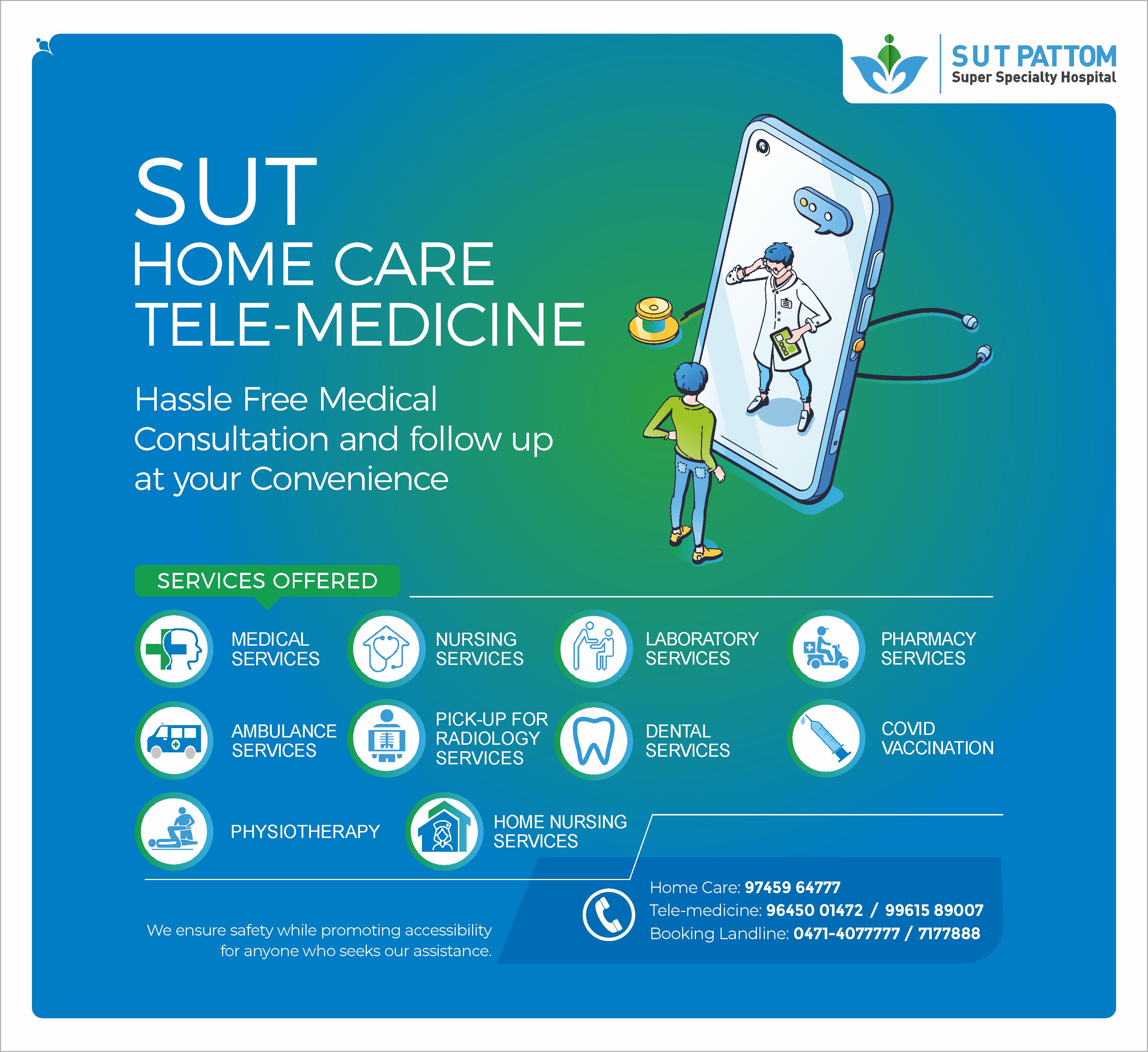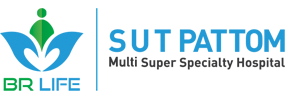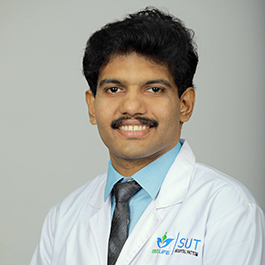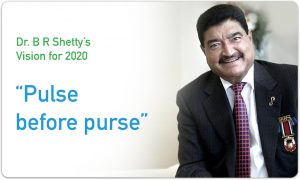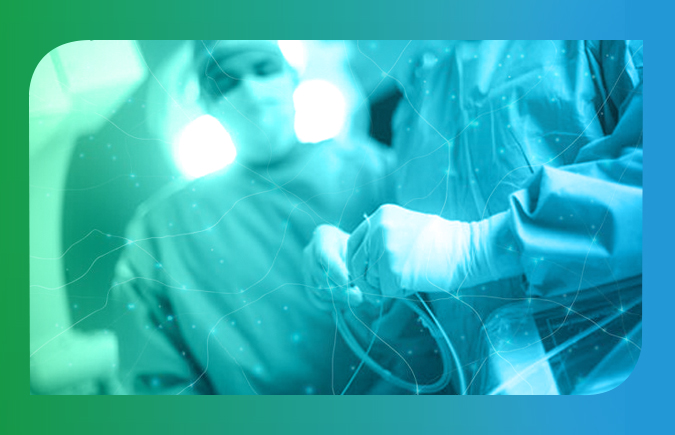
Vascular & Endovascular Surgery
All organs in the human body are provided with a network of pure [arteries] and impure [veins] blood vessels to provide oxygen and metabolites for normal functioning. Any affliction or loss of integrity of blood vessels leads to serious defect in concerned organ function, severity of which depends on the degree of diminished blood flow.
Incidence of vascular diseases has been found to be on the rise in India over the past decade. Atherosclerosis and allied causes like arteriopathies leads to the involvement of Aorta and arteries resulting in aneurismal or occlusive diseases with potential risk to limb, organ and or life.
Advanced age, smoking habit, consumption of alcohol, over eating, obesity, physical inactivity coupled with diabetes and hypertension are found to enhance the disease process. Enlargement or excessive dilation (aneurysm) and blockade of vessels with excessive fat and cholesterol are the two major types of vascular diseases involving pure blood vessels. Aneurysm eventually ruptures threatening life and arterial blockade leads to malfunction of organs leading to stroke, heart attack, kidney failure and leg cramps. In addition, varicose veins and deep vein thrombosis with serious potential complications involving veins are also on the rise.
Some of the common vascular illnesses are stroke, Peripheral arterial occlusive diseases among others affecting kidneys and intestines. When aorta / arteries start dilating like balloon, it results in a life-threatening illness called Aneurysm for which prompt treatment is required as a life-saving measure. Likewise, when high and uncontrolled blood pressure leads to a crack in Aorta called ‘Dissection’, urgent measures along with medical, surgical or interventional measures have to be expeditiously employed to save life.
Venous diseases, Varicose veins and Venous Thromboembolic disorders require treatment appropriately. The latter generally occurs in hospitalised patients and migration of clots into heart and lungs could be life-threatening .
Arterio-venous constitutes a third variety of vascular illness most of them occurring by birth but presenting much later in life.
Investigations
Detailed history with thorough clinical examination provides valuable clues to the organ involved and requires relevant investigations. They include blood tests, duplex scan and CT/MR scanning to delineate extent of arterial disease, nature of organ disfunction and thus treatment modality is necessary. Also other systems functioning especially cardiac needs have to be assessed when open procedure is contemplated.
Treatment Strategies
Dietary control, moderate physical activities and stopping smoking habit should be pursued by patients. Medications for control of diabetes, hypertension and hyperlipidaemia are vital to modify and control deleterious effects on afflicted blood vessels.
If the patient presents with critical symptoms with threatening organ dysfunction, further measures are necessary in the form of endovascular intervention and even open surgical treatment. Endovascular surgery is less stressful for patients than operation but open surgery is durable and lasts a lifetime for patients in most cases.
Common vascular illnesses
1. Peripheral arterial disease
Basically these are related to inadequate pure blood circulation to the legs and less commonly to arms. This illness has a wide variety of presentation namely claudication meaning cramps in legs or tiredness or inability to walk up a slope, leg pain occurring at rest, ulceration or even bluish or blackish discoloration meaning extreme blood stoppage which if not treated urgently may end up with the patient losing his or her limb.
For initial difficulty, medications, stopping smoking and graded walking exercises are sufficient. However, worse status of leg calls for Angioplasty [keyhole surgery] or even bypass procedures to save limbs.
2. Carotid artery disease
Carotid [or Brain] artery may be afflicted with fat deposition due to atherosclerosis resulting in prestroke namely temporary weakness of upper and or lower limbs, inability to speak, visual disturbance which again if not treated may lead to permanent stroke with its devastating sequelae. Along with medications, carotid endarterectomy or stenting will help prevent stroke if performed timely.
3. Aortic aneurysm
When aorta [Mahadhamani] starts ballooning and gets enlarged due to atherosclerosis, this condition threatens life due to rupture upon reaching a size of >5.5 cms or more. Open operation using large diameter dacron graft and endovascular prosthesis could be deployed. Minimally invasive or key hole surgery are available to save patients life.
Similarly, conventional surgery and endovascular aortic aneurysm repair are also regularly performed at our institution with excellent results.
For complicated diseases like aortic arch aneurysm or aortic dissection, hybrid procedure is also performed with high success rate.
Arteriovenous access procedures required for long duration haemodialysis are performed with more than 95% patency in patients with chronic renal failure.
Apart from these, there are several diseases that involve blood circulation to various organs of our body for which appropriate treatment strategies are available at SUT Pattom to save life or organ and provide quality of life to those affected.
Symptomatic varicose vein needs to be ablated and venous thromboembolism needs optimal medications for varying time frames to prevent life-threatening pulmonary embolism. Vascular and endovascular procedures are regularly performed for patients. Standard thoracic operations are performed with high success rate at SUT Pattom, Trivandrum.
Doctors
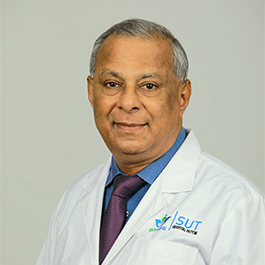
Vascular and Endovascular Surgery



